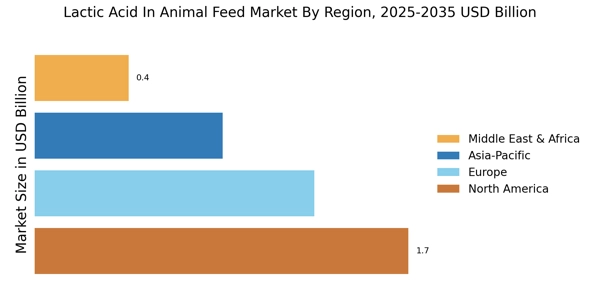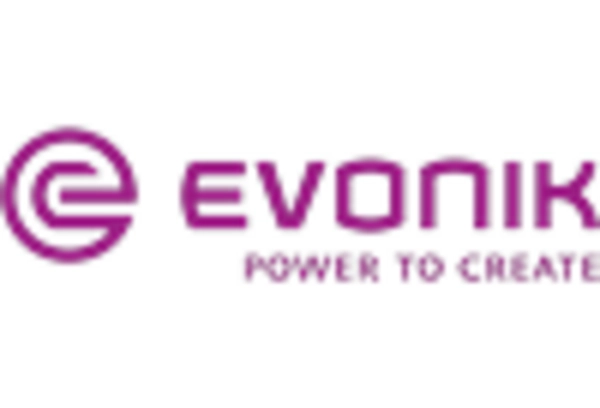Rising Meat Consumption
The Lactic Acid In Animal Feed Market is poised for growth due to the rising consumption of meat products. As populations increase and dietary preferences shift towards protein-rich foods, the demand for livestock products is expected to rise significantly. This trend creates a corresponding need for effective feed additives that can enhance animal growth and health. Lactic acid, known for its role in improving feed efficiency and promoting gut health, is likely to see increased adoption among livestock producers. Market data suggests that meat consumption is projected to rise by over 10% in the coming years, further driving the demand for lactic acid in animal feed formulations.
Focus on Sustainable Farming Practices
The Lactic Acid In Animal Feed Market is influenced by the growing emphasis on sustainable farming practices. As environmental concerns become more pronounced, farmers are seeking ways to reduce their ecological footprint while maintaining productivity. Lactic acid serves as a viable option for enhancing feed efficiency and reducing waste in animal husbandry. By incorporating lactic acid into feed, producers can potentially lower methane emissions and improve overall sustainability. This shift towards eco-friendly practices is likely to bolster the demand for lactic acid in animal feed, as it aligns with the broader goals of sustainable agriculture and responsible livestock management.
Increasing Awareness of Animal Nutrition
The Lactic Acid In Animal Feed Market is experiencing a surge in awareness regarding the importance of animal nutrition. As consumers become more conscious of the quality of animal products, livestock producers are compelled to enhance the nutritional value of their feed. This trend is likely to drive the demand for lactic acid as a feed additive, which is known to improve gut health and nutrient absorption. According to recent data, the market for animal feed additives is projected to grow at a compound annual growth rate of approximately 5.5% over the next few years. This growth is indicative of a broader shift towards optimizing animal health and productivity, thereby reinforcing the role of lactic acid in feed formulations.
Regulatory Support for Natural Additives
The Lactic Acid In Animal Feed Market benefits from increasing regulatory support for natural feed additives. Governments and regulatory bodies are promoting the use of natural ingredients in animal feed to ensure food safety and enhance animal welfare. This regulatory environment is conducive to the adoption of lactic acid, which is recognized for its safety and efficacy. The market is likely to see a rise in lactic acid usage as producers seek to comply with these regulations while also meeting consumer demand for healthier animal products. The potential for lactic acid to serve as a natural preservative further enhances its appeal in the market, aligning with the trend towards cleaner labels in animal feed.
Technological Innovations in Feed Production
The Lactic Acid In Animal Feed Market is benefiting from technological innovations in feed production. Advances in fermentation technology and bioprocessing are enabling the efficient production of lactic acid, making it more accessible to feed manufacturers. These innovations not only enhance the quality of lactic acid but also reduce production costs, thereby making it a more attractive option for inclusion in animal feed. As the industry continues to evolve, the integration of new technologies is expected to drive the growth of lactic acid usage in feed formulations, supporting the overall trend towards improved animal health and performance.


















Leave a Comment